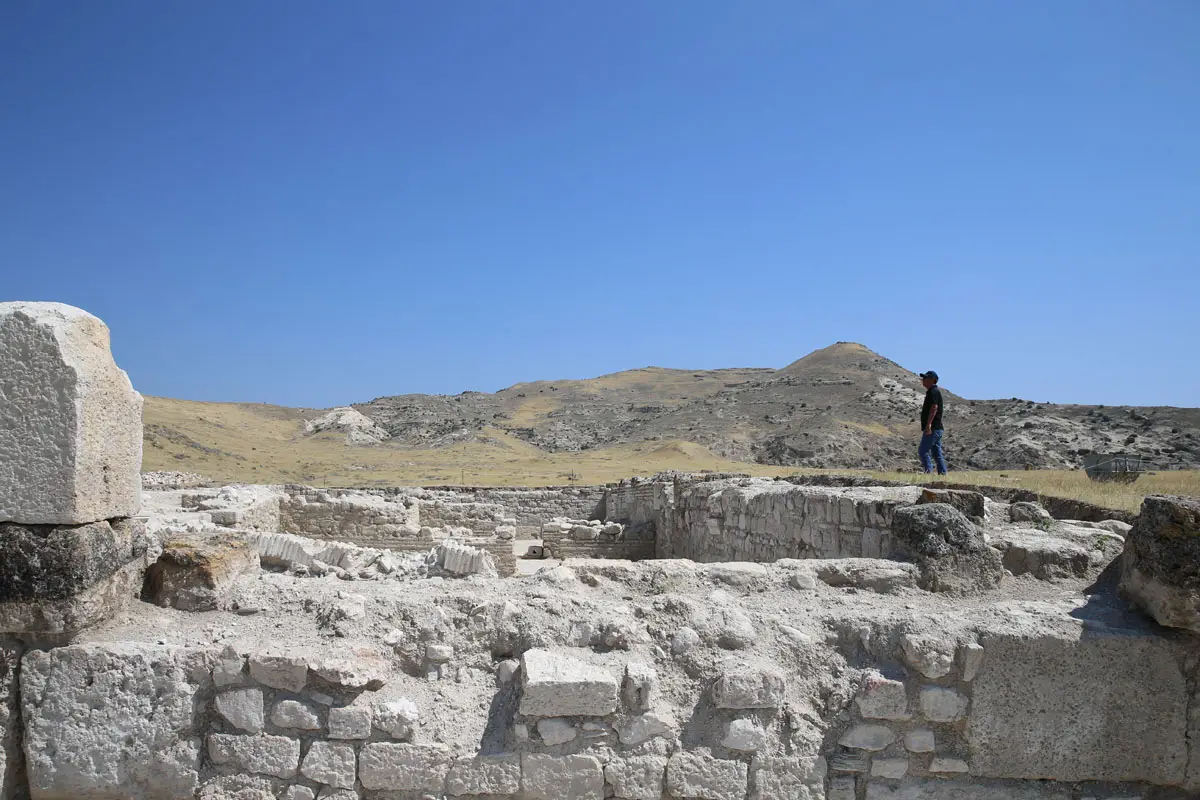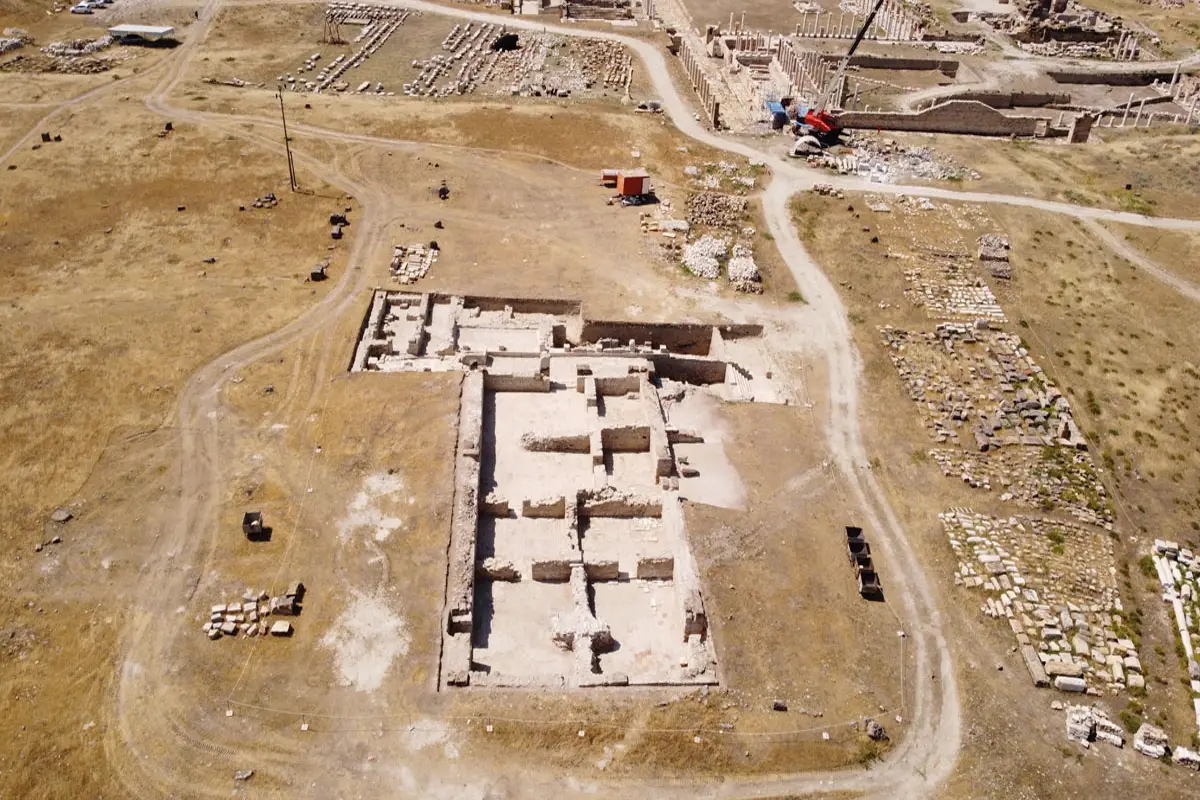A team of archaeologists from Pamukkale University have unearthed a grand villa complex spanning 1,500 square metres in the ancient city of Tripolis.
Situated in the Buldan district of Denizli, Turkey, Tripolis is renowned for its well-preserved ruins, most of which date from the Roman and Byzantine periods.
Previous archaeological studies have discovered ornately decorated frescoes and mosaics, a theatre, bath houses, basilicas, a forum, and an advanced water transportation and sewage system.
In the latest season of excavations, archaeologists have unearthed a grand villa complex dating to the early 5th century AD.

The villa contains two grand halls, a columned courtyard, and two fountains centred on a pond and inner garden. Unlike typical decorative pools, the pond was specifically designed to hold fish, indicated by terracotta water pipes inside the pond’s walls that served as shelter for fish from the sun.
Excavations also found seashell and fish-shaped marble motifs around the pond walls, suggesting that species such as carp, catfish, and eel were kept as a mark of prestige and for food.
Prof. Dr. Bahadır Duman of Pamukkale University, said: “We encountered important findings in the field. The building complex we are working on covers a total area of 1,500 square metres, 480 metres of which is enclosed.”
“We can describe it as a rather large villa structure. I call it a villa because it is larger than standard residences, and the elements used in the architectural decoration and wall ornamentation here are somewhat different from the other standard residences we have found,” added Prof. Duman.
Header Image Credit : Pamukkale University
Sources : Pamukkale University





